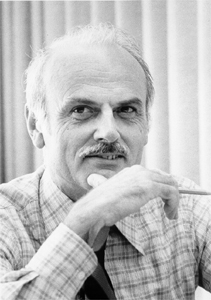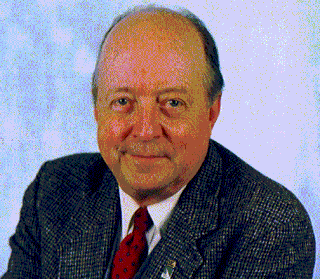Related Research Articles

In computing, a database is an organized collection of data or a type of data store based on the use of a database management system (DBMS), the software that interacts with end users, applications, and the database itself to capture and analyze the data. The DBMS additionally encompasses the core facilities provided to administer the database. The sum total of the database, the DBMS and the associated applications can be referred to as a database system. Often the term "database" is also used loosely to refer to any of the DBMS, the database system or an application associated with the database.
In mathematics, a finitary relation over a sequence of sets X1, ..., Xn is a subset of the Cartesian product X1 × ... × Xn; that is, it is a set of n-tuples (x1, ..., xn), each being a sequence of elements xi in the corresponding Xi. Typically, the relation describes a possible connection between the elements of an n-tuple. For example, the relation "x is divisible by y and z" consists of the set of 3-tuples such that when substituted to x, y and z, respectively, make the sentence true.
A relational database is a database based on the relational model of data, as proposed by E. F. Codd in 1970. A system used to maintain relational databases is a relational database management system (RDBMS). Many relational database systems are equipped with the option of using SQL for querying and updating the database.
The relational model (RM) is an approach to managing data using a structure and language consistent with first-order predicate logic, first described in 1969 by English computer scientist Edgar F. Codd, where all data is represented in terms of tuples, grouped into relations. A database organized in terms of the relational model is a relational database.
Structured Query Language (SQL) is a domain-specific language used in programming and designed for managing data held in a relational database management system (RDBMS), or for stream processing in a relational data stream management system (RDSMS). It is particularly useful in handling structured data, i.e., data incorporating relations among entities and variables.

An object–relational database (ORD), or object–relational database management system (ORDBMS), is a database management system (DBMS) similar to a relational database, but with an object-oriented database model: objects, classes and inheritance are directly supported in database schemas and in the query language. In addition, just as with pure relational systems, it supports extension of the data model with custom data types and methods.

Edgar Frank "Ted" Codd was an English computer scientist who, while working for IBM, invented the relational model for database management, the theoretical basis for relational databases and relational database management systems. He made other valuable contributions to computer science, but the relational model, a very influential general theory of data management, remains his most mentioned, analyzed and celebrated achievement.
Online analytical processing, or OLAP, is an approach to answer multi-dimensional analytical (MDA) queries swiftly in computing. OLAP is part of the broader category of business intelligence, which also encompasses relational databases, report writing and data mining. Typical applications of OLAP include business reporting for sales, marketing, management reporting, business process management (BPM), budgeting and forecasting, financial reporting and similar areas, with new applications emerging, such as agriculture.
First normal form (1NF) is a property of a relation in a relational database. A relation is in first normal form if and only if no attribute domain has relations as elements. Or more informally, that no table column can have tables as values. Database normalization is the process of representing a database in terms of relations in standard normal forms, where first normal is a minimal requirement. SQL-92 does not support creating or using table-valued columns, which means that using only the "traditional relational database features" most relational databases will be in first normal form by necessity. Database systems which do not require first normal form are often called NoSQL systems. Newer SQL standards like SQL:1999 have started to allow so called non-atomic types, which include composite types. Even newer versions like SQL:2016 allow JSON.
Third normal form (3NF) is a database schema design approach for relational databases which uses normalizing principles to reduce the duplication of data, avoid data anomalies, ensure referential integrity, and simplify data management. It was defined in 1971 by Edgar F. Codd, an English computer scientist who invented the relational model for database management.
A hierarchical database model is a data model in which the data are organized into a tree-like structure. The data are stored as records which are connected to one another through links. A record is a collection of fields, with each field containing only one value. The type of a record defines which fields the record contains.
Codd's twelve rules are a set of thirteen rules proposed by Edgar F. Codd, a pioneer of the relational model for databases, designed to define what is required from a database management system in order for it to be considered relational, i.e., a relational database management system (RDBMS). They are sometimes referred to as "Codd's Twelve Commandments".
A sublanguage is a subset of a language. Sublanguages occur in natural language, computer programming language, and relational databases.
A database server is a server which uses a database application that provides database services to other computer programs or to computers, as defined by the client–server model. Database management systems (DBMSs) frequently provide database-server functionality, and some database management systems rely exclusively on the client–server model for database access.
Database theory encapsulates a broad range of topics related to the study and research of the theoretical realm of databases and database management systems.
The MICRO Relational Database Management System was the first large-scale set-theoretic database management system to be used in production. Though MICRO was initially considered to be an "Information Management System", it was eventually recognized to provide all the capabilities of an RDBMS. MICRO's major underpinnings and algorithms were based on the Set-Theoretic Data Structure (STDS) model developed by D. L. Childs of the University of Michigan's CONCOMP Project. MICRO featured a natural language interface which allowed non-programmers to use the system.

Raymond F. Boyce (1946–1974) was an American computer scientist who was known for his research in relational databases. He is best known for his work co-developing the SQL database language and Boyce-Codd normal form.
Codd's theorem states that relational algebra and the domain-independent relational calculus queries, two well-known foundational query languages for the relational model, are precisely equivalent in expressive power. That is, a database query can be formulated in one language if and only if it can be expressed in the other.

Michael Ralph Stonebraker is a computer scientist specializing in database systems. Through a series of academic prototypes and commercial startups, Stonebraker's research and products are central to many relational databases. He is also the founder of many database companies, including Ingres Corporation, Illustra, Paradigm4, StreamBase Systems, Tamr, Vertica and VoltDB, and served as chief technical officer of Informix. For his contributions to database research, Stonebraker received the 2014 Turing Award, often described as "the Nobel Prize for computing."

Franklin Herbert Westervelt was an American engineer, computer scientist, and educator at the University of Michigan and Wayne State University. Westervelt received degrees in Mathematics, Mechanical and Electrical Engineering from the College of Engineering at the University of Michigan. He attained his PhD in 1961. He was a Professor of Mechanical Engineering at the University of Michigan and an Associate Director at the U-M Computing Center. He was involved in early studies on how to use computers in engineering education.
References
- ↑ Childs (1968a), Coverpage.
- ↑ Childs (1968b).
- ↑ Birss & Yeh (1977), p. 1.
- ↑ North (2010).
- ↑ Zozus (2017), Data Storage Structures.
- ↑ Microsoft (2006).
- Birss, Edward W.; Yeh, Jeffry W. (January 31, 1977). Set Theoretic Data Structures (STDS): A tutorial (PDF) (Report). Lawrence Livermore Laboratory. Archived (PDF) from the original on August 30, 2018. Retrieved May 20, 2020.
- Microsoft (August 8, 2006). "Using Extended Set Theory for High Performance Database Management". Microsoft. David Childs. Retrieved May 23, 2020.
- Kahn, Michael A.; Bumelhart, Donald L.; Bronson, Boyd L. (October 1, 1977). Cohen, Malcolm S. (ed.). "MICRO Information Management System (Version 5.0) Reference manual". University of Michigan & Wayne State University. p. 14.
- North, Ken (March 10, 2010). "Sets, Data Models and Data Independence". DrDobbs. Archived from the original on March 16, 2011. Retrieved May 20, 2020.
- Zozus, Meredith Nahm (2017). The Data Book - collection and management of research data. CRC Press. ISBN 9781351647731. OCLC 1125020524.
- "Machine-Independent Data Structure Management - Accessing Data by Mathematical Identity, Not by Physical Location". xsp.xegesis.org. Integrated Information Systems. 2023. Retrieved December 31, 2023.
Bibliography
- "Description of a set-theoretic data structure" (PDF). CONCOMP (Research in Conversational Use of Computers) Project. Vol. Technical Report 3. University of Michigan. 1968a. Archived (PDF) from the original on May 21, 2020.
- "Feasibility of a set-theoretic data structure: a general structure based on a reconstituted definition" (PDF). CONCOMP (Research in Conversational Use of Computers) Project. Vol. Technical Report 6. University of Michigan. 1968b. Archived from the original on May 21, 2020.